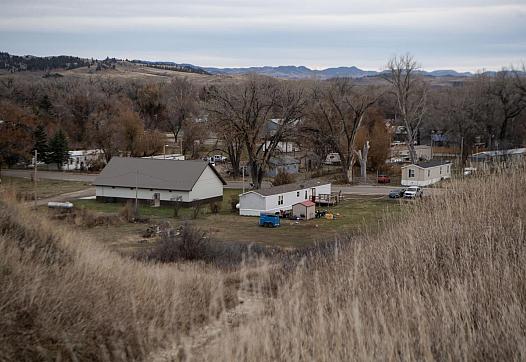CROW RESERVATION — When doctors in Billings told Ursula Rides Horse-Russell she had Stage 2 breast cancer, her mind went blank. She had buried her 34-year-old son two days earlier.
'People die like that': Native Americans face serious barriers in accessing care
The story was originally published by the Missoulian with support from our 2023 National Fellowship.
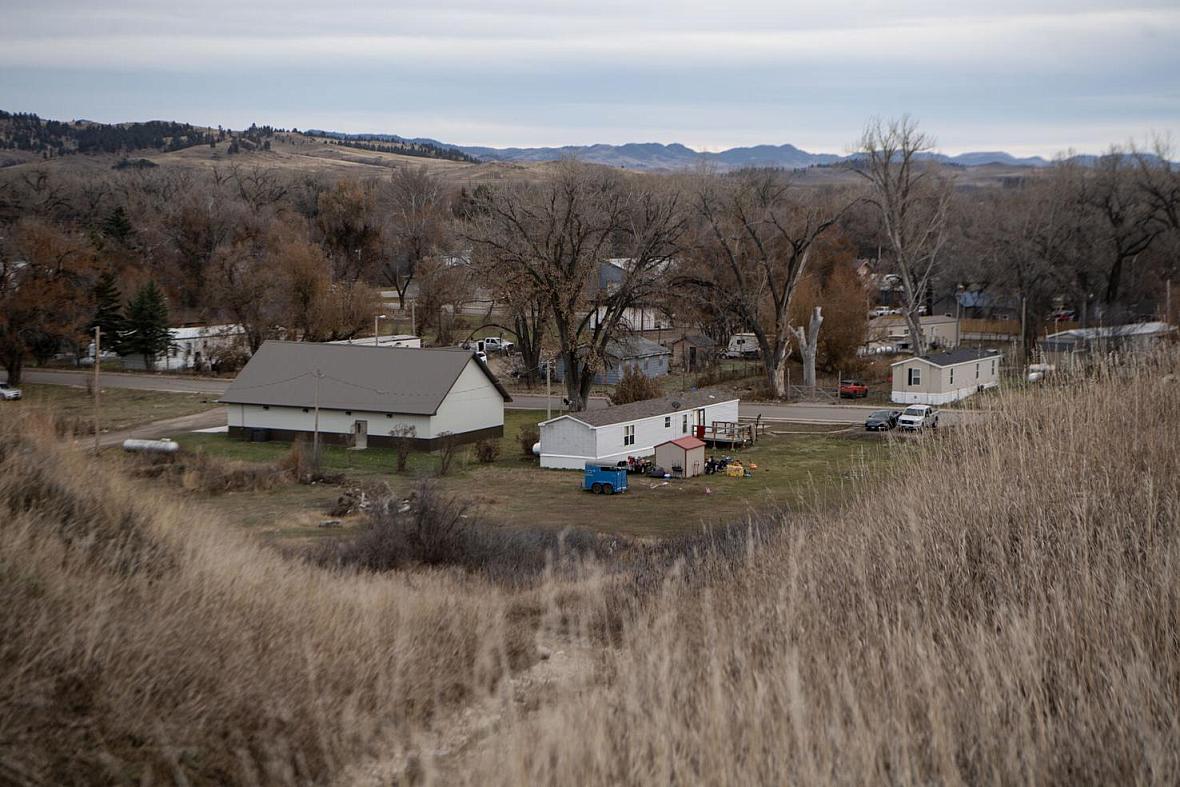
She couldn’t remember who came to the funeral or who sent condolences. Navigating a new and scary diagnosis felt impossible.
Doctors surgically removed her cancer but told Ursula she’d have to travel to Billings several times a week for chemotherapy — 50 miles each way.
For Ursula and her husband Barry, Ursula’s care presented a logistical nightmare.
To drive from their home in Hardin to doctors in Billings, Ursula and Barry would need a reliable vehicle and money for food, gas and possibly a hotel — none of which they had.
And Ursula and Barry’s children have health issues of their own. Like many grandparents in tribal communities, they raise their three grandchildren full-time. That means they’d also have to find trustworthy care for the kids when traveling for Ursula’s appointments.
Moving to Billings could make things easier, but how would they find affordable housing and good schools for the kids? And could they leave their community behind?
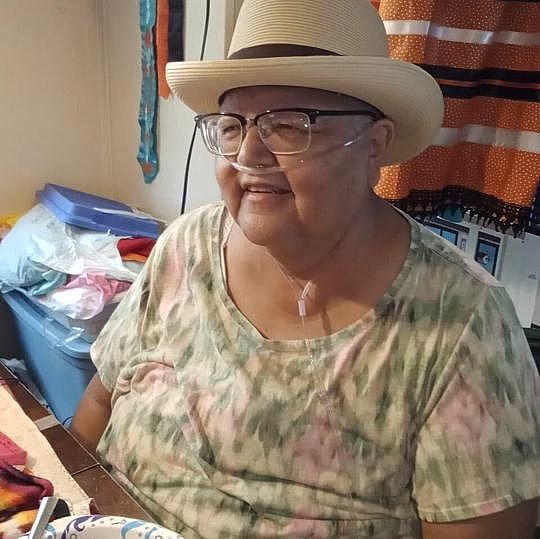
Ursula Rides Horse-Russell moved from Hardin to Billings to be closer to health care.
At 63, Ursula is three years older than the average age at which Indigenous women die in her county. When she learned her diagnosis, she knew she’d have to fight more than just the cancer to survive.
“I knew I had to live for my grandchildren,” she said. “We’re the only parents they know.”
Ursula, who is Crow, is one of thousands of Indigenous people in Montana who face serious barriers accessing the health care they need to live.
Native Americans have the lowest life expectancy of any racial or ethnic group in the U.S. In Montana, where Native Americans comprise 6.7% of the population, Indigenous people die a generation younger than their white neighbors.
Experts say inadequate care, food deserts, discrimination at the doctor’s office, harmful U.S. policies, poverty and rurality are among the factors contributing to the crisis. And while tribal leaders have raised the issue for years, they say improving health outcomes is not a priority among state and federal leaders.
Indian Health Service, the federal agency responsible for providing health care to federally recognized tribes, is chronically underfunded and doesn’t administer specialty care. So, depending on where one lives on the reservation, a person may have to travel hours for things like cancer treatment, behavioral health services or even to deliver a baby.
In a place where almost 30% of people live below the poverty level — more than twice that of Montana and the U.S — traveling for health care comes at significant cost. There’s gas money, vehicle maintenance, child care, time off work.
Rurality isn’t the only issue — Native Americans in Montana die, on average, 17 years younger than the state’s white rural residents. A deep-seated mistrust of the Indian Health Service means community members may avoid getting the care they need. And while Indigenous people are more likely to die from heart disease, cancer, diabetes, liver disease, stroke and suicide than their white neighbors in Montana, they must rely on an overburdened, underfunded system of care.
Despite these challenges, however, community members fight for solutions to help each other survive.
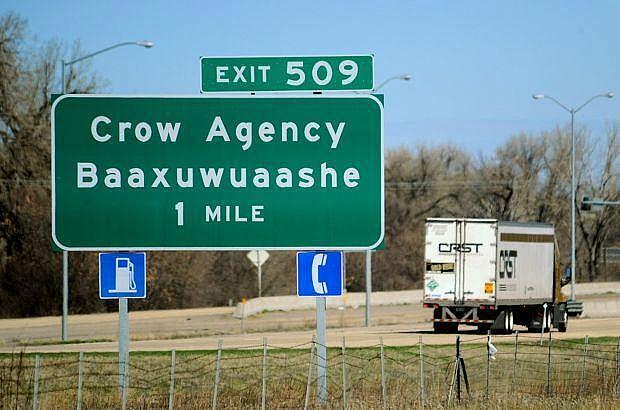
A sign in Crow Agency on the reservation.
‘Gas is very precious': Distance to care No. 1 challenge
The most significant barrier community members face in accessing care is transportation, according to LeeAnn Bruised Head, director of the Crow Tribal Health Department.
“We live in poverty here,” she said. “A lot of people don’t own cars, and if they do, gas is very precious.”
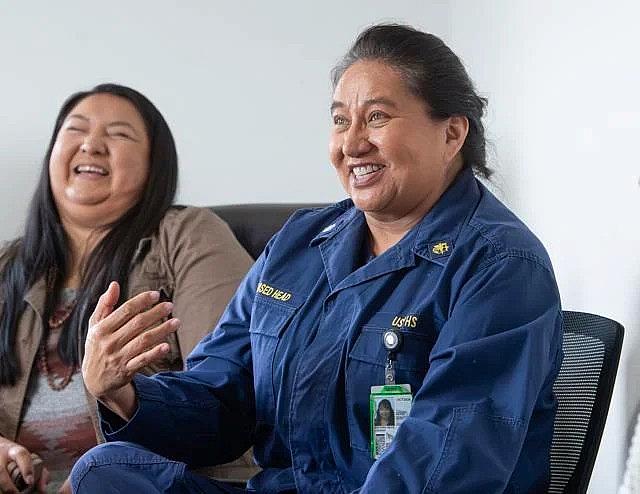
Crow Tribal Health Director LeeAnn Bruised Head (right) laughs with Crow Legislator Charla Takes Enemy at a meeting on Wednesday, Nov. 15 in Crow Agency.
Amy Lynn Nelson, Billings Gazette
While several programs offer transportation or financial assistance, they don't come close to meeting community needs. Some organizations distribute gas cards to help people get to appointments. Tribal transit takes people to Billings in the mornings and evenings. And while the tribe can provide limited financial support to members, members must first submit their medical records to people in leadership. In a close-knit community where rumors spread fast, some are hesitant to share their medical records for privacy reasons.
Tribal transit didn’t run at convenient times for Ursula’s appointments. And she didn’t feel comfortable giving the tribe her records, so Barry drove her to most appointments.
“I’m mad at the tribe,” Ursula said, adding that she felt like she had to jump through hoops to get the support she needed. “We do everything ourselves, and we’re doing the best we can.”
It didn’t take long for their frequent trips from Hardin to Billings to become precarious.
When it snowed, Ursula made Barry promise to drive slow, sometimes making their trips take twice as long. They often brought their grandchildren in tow, but with school and homework, that was difficult, too. With winter temperatures reaching 20 below zero and slick roads, sometimes Ursula and Barry would get stuck in Billings and have to pay for a hotel.
Other times, Ursula couldn’t get to her appointments at all.
In October — six months after her diagnosis — Ursula, Barry and their three grandchildren secured affordable housing in Billings and made the move. Though she’s glad to be closer to care, Ursula said moving was hard on her family.
“We don’t hardly know anybody here,” she said. “We keep to ourselves. The only ones we know are our doctors, nurses and pharmacy people.”
While she and Barry drained their savings on countless trips to Billings, uprooted their family and left their community to live closer to doctors, they count themselves lucky.
They both know that if they hadn’t been able to travel in the first place, doctors may not have found the cancer in time to safely remove it.
“A lot of people die like that,” Ursula said.
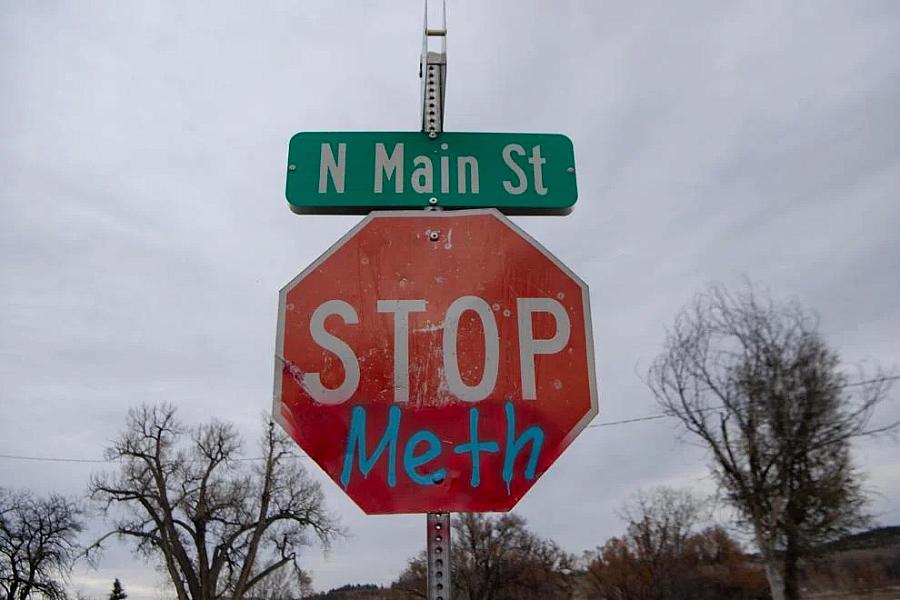
On the Crow Reservation, there is a year-long wait for behavioral health counseling services. Without someone to talk to, community members say too many people turn to drugs and alcohol to self-medicate.
Amy Lynn Nelson, Billings Gazette
‘You’ll die’: IHS wields bad reputation
Prior to her cancer diagnosis, Ursula regularly made the 50-mile-drive to a hospital in Billings for her persistent chest pain.
While chest pain can be urgent, she didn’t even consider going to the Indian Health Service (IHS) facility 15 miles away because she, like many community members, doesn’t trust the federal agency.
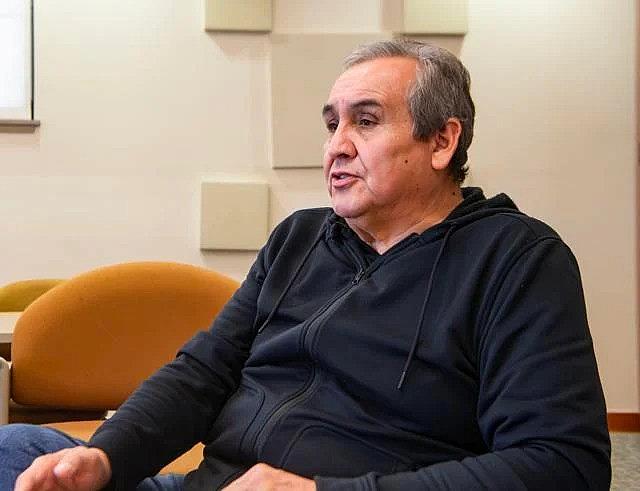
Sidney “Chip” Fitzpatrick works for Messengers for Health, a nonprofit on the Crow Reservation that does health education outreach.
Amy Lynn Nelson, Billings Gazette
Sidney “Chip” Fitzpatrick, who lives on the Crow Reservation, said growing up, his grandfather would tell him not to go to IHS.
“He said, ‘They’ll get you sick, and then you’ll die,’” Fitzpatrick recalled, adding he avoided IHS for more than 20 years until a knee injury forced him to go.
Tribal leaders have urged members of Congress to increase IHS funding, improve services and enhance staffing for decades to little avail. Frustration is so high that one Montana tribe recently called for the removal of several IHS state and national leaders. Past unethical health abuses at IHS also have far-reaching consequences. A recent federal report cited the forced sterilization of Indigenous women as yet another reason why people remain skeptical of the agency.
It doesn’t help that other policy decisions undermine this unique system of care. The unwinding of Medicaid has disproportionately hurt Native Americans nationwide, and a recent sober-living fraud scheme took advantage of Indigenous people in Montana. Last month, the state health department quietly eliminated the tribal relations manager position, sparking outrage among tribal leaders who said improving health outcomes just isn’t a priority in the state.
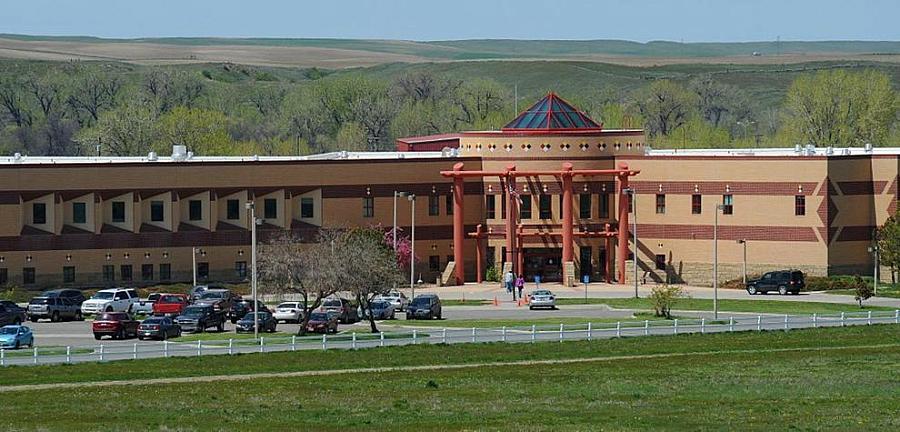
‘We accept no for an answer’: Cultural differences in care
Tribal health professionals and community members say providers at IHS, an agency established specifically for tribes, need more training on culturally sensitive care.
For cultural reasons, Indigenous people may avoid eye contact with medical providers, which can be misinterpreted as a sign of disinterest. And community members say advocating for themselves in the medical space can feel uncomfortable.
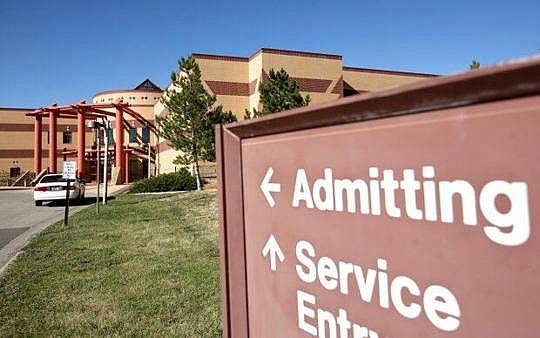
The Indian Health Service operates the Crow-Northern Cheyenne Hospital in Crow Agency.
CASEY PAGE/Gazette Staff
Anna Whiting Sorrell, a citizen of the Confederated Salish and Kootenai Tribes, previously served as director of the Montana Department of Health and Human Services. She was also the IHS Billings Area director and an administrator for the tribal health department on the Flathead Indian Reservation.
When she worked for the state, Whiting Sorrell watched as non-Native families fought insurance companies, sometimes appealing to the governor’s office until their issue was resolved.
“I was like, ‘Wow. People do that?’” Whiting Sorrell recalled. She suspects self-advocacy doesn’t come easily for Indigenous families, in part, due to historical trauma.
“We accept ‘no’ for an answer,” she explained. “It’s a belief prevalent in our tribal communities because we’ve been told ‘no’ to health care through IHS and other systems.”
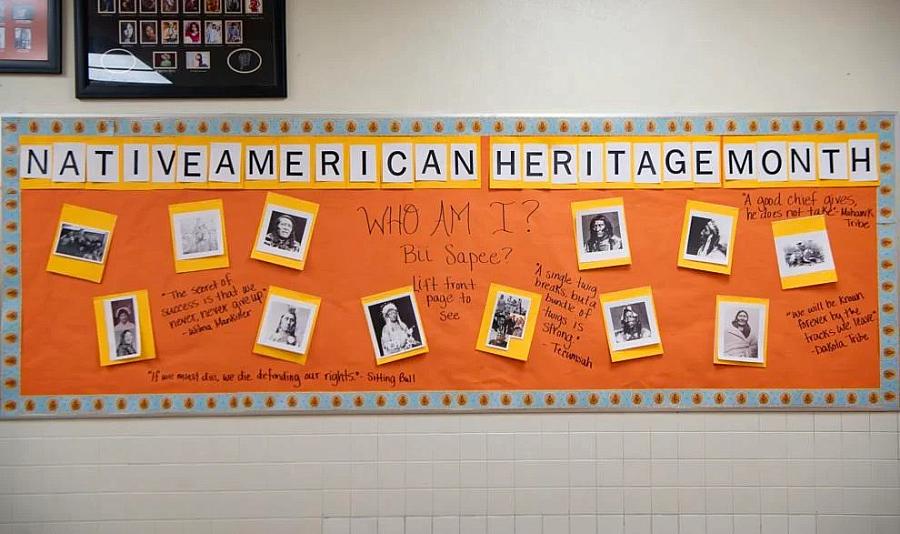
A sign hangs in the Lodge Grass School District building promoting Native American identity.
Amy Lynn Nelson, Billings Gazette
'An uphill battle': The unique problems with IHS
In its last budget report, IHS said it would need nearly $50 billion to be sufficiently funded. The Biden administration last year allocated $9.3 billion to the agency — $40 billion short of the request but still the largest investment in IHS to date.
Because IHS doesn’t provide most specialty services, patients get referred to bigger hospitals, and IHS will usually cover the cost of care. But that system can be unreliable, as community members know the agency can run out of money. IHS’s funding is renewed at the start of each fiscal year in October, so patients have a better chance of getting a referral at the beginning of the year rather than at the end.
The agency also struggles to attract and retain doctors, nurses and behavioral health clinicians — problems that are exacerbated by a lack of housing and employment opportunities on the reservation.
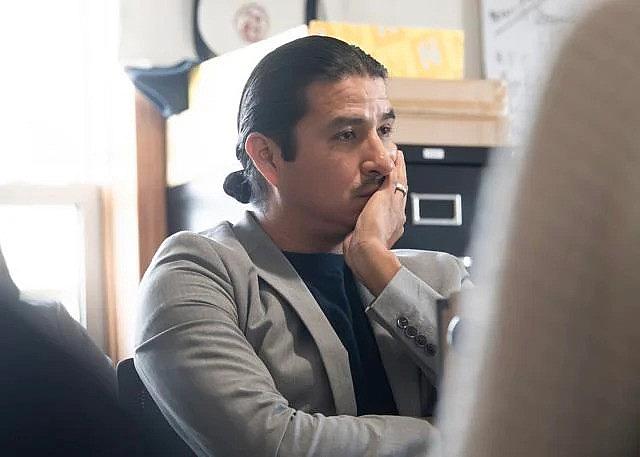
Levi Black Eagle, secretary of the Crow Tribe, said non-Native health providers often leave the Crow Reservation after a few months or years, contributing to instability in the health care system.
Amy Lynn Nelson, Billings Gazette
And despite incentives that repay student loan debt in exchange for working at IHS, Levi Black Eagle, secretary of the Crow Tribe, said community members see non-Native medical professionals leave time and again.
“Say you have an outsider who comes in and wants to make a difference in this community,” said Black Eagle. “They get here and it’s an uphill battle. They have all these things working against them, and they’re going to leave.”
With limited staff at IHS, community members often see a revolving door of providers and face long wait times to schedule appointments.
Tribal health employees said in November that if someone wanted to receive behavioral health services or counseling, they’d have to wait between six months and one year to get in the door. Without someone to talk to, community members say too many people turn to drugs and alcohol to self-medicate. In 2020, 70% of Crow middle school students reported drinking alcohol before age 13, and chronic liver disease was the second-leading cause of death for Crow community members ages 18 to 54 from 2015 to 2019.
Lisa Daychild, who works at the Lodge Grass School District, lost two brothers and one sister — all in their 40s. Two died of addiction and one from suicide. She often wonders whether more resources, behavioral health or otherwise, could’ve saved them.
“I always think about that,” she said, shaking her head.
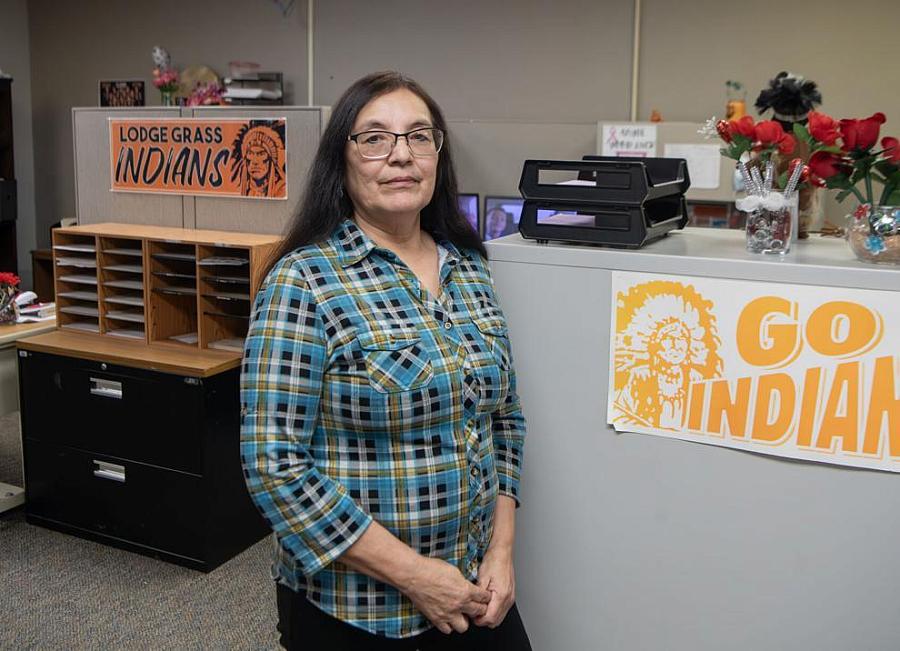
Lisa Daychild, who works at the Lodge Grass School District, has lost several siblings in premature deaths that she says were preventable. She says the community needs more walking paths and a community center to improve health outcomes.
Amy Lynn Nelson, Billings Gazette
‘Someone they trust’: Seeking out solutions
Caught in a web of government bureaucracy and red tape, Crow residents say solutions are most effective when they come from within the community. When it comes to insufficient staffing at IHS, those community members want to see more pathways for Native Americans to pursue careers in medicine.
Little Big Horn College on the reservation offers a pre-nursing program, but students must leave the community to earn more advanced medical degrees.
Black Eagle, the tribal secretary, said that while non-Native providers often leave after a few months or years, community members, who have established support systems, are more likely to stay.
Tribal leaders say it’s imperative all medical and nursing students receive education specifically on providing health care to Indigenous people. “Culturally sensitive care” refers to the idea that people of different backgrounds may face unique barriers in accessing Western health care systems.
Practicing this kind of care can look different in different contexts. It can mean doctors make space for Indigenous patients and their families to smudge. It can mean a provider understands that it’s not uncommon for Indigenous patients’ family members to attend appointments and do most of the talking.
Misty Wilkie, associate professor at the University of Minnesota School of Nursing, helped develop a virtual Ojibwe patient module to educate medical students on cultural differences. While this is a step in the right direction, she said increasing Indigenous faculty and enhancing programs for Native students is a must.
Because Native Americans face high rates of historical and ongoing trauma, Bruised Head, from Crow Tribal Health, said trauma-informed care is another crucial piece to the puzzle. Where culturally sensitive care acknowledges a patient’s unique identity, trauma-informed care addresses a patient’s entire life experience to provide quality care.
When done right, Bruised Head said trauma-informed care can promote healing and disrupt intergenerational cycles of psychological distress.
Crow community members say grocery stores, walking paths and health education outreach in schools would greatly improve health outcomes on the reservation as well.
Responding to a legacy of mistrust, Alma McCormick — executive director of Messengers for Health, a nonprofit that provides health education outreach on the reservation — said community members are more likely to listen to each other when it comes to important health decisions. It’s why she goes door-to-door encouraging others to go to appointments.
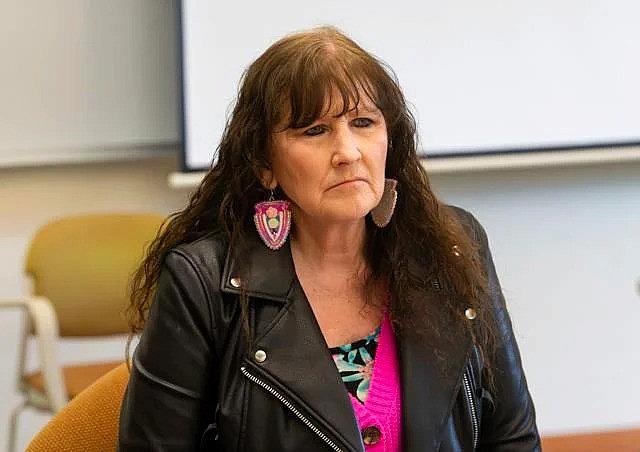
Alma McCormick, executive director of Messengers for Health, builds trust and relationships with community members in her health education outreach.
Amy Lynn Nelson, Billings Gazette
“Our people need someone to reach out to them,” she said. “Someone they know. Someone they trust. Someone that loves them and cares about them. That’s the key.”
Fitzpatrick, the man who once avoided IHS for 20 years, now does education outreach for Messengers for Health.
Fitzpatrick’s cousin, who worked as a mechanic, died in his garage at 60. His uncle died on his doorstep. Another uncle died of a heart attack and another man close to him took his own life.
“They should have never died, but they did," Fitzpatrick reflected. "I was just thinking, they had to have had some pain. But they’re so proud, they don’t go to the hospital. When I hear that, I say, ‘I better go get my blood pressure checked and get a colonoscopy.’”
And he tells others to do the same.

